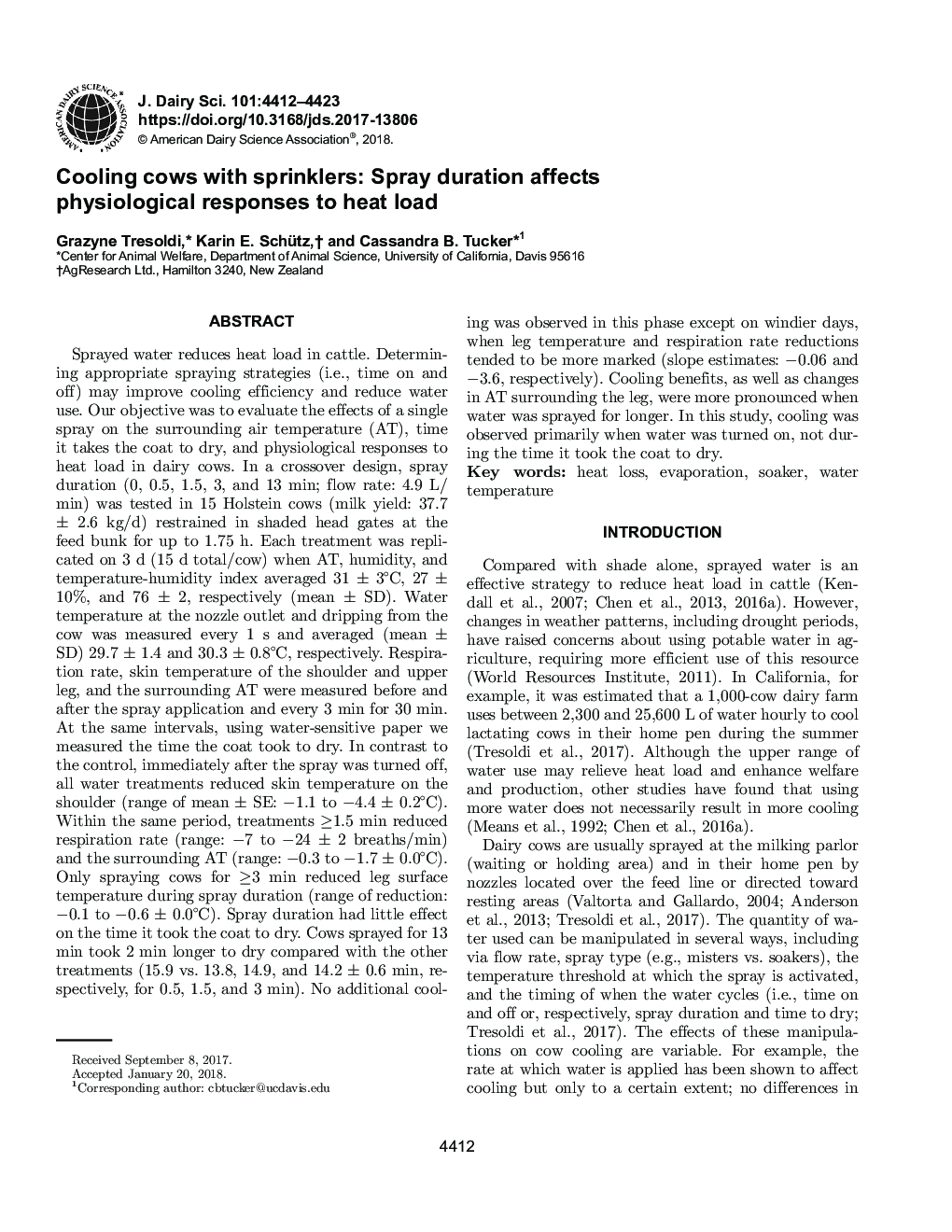| Article ID | Journal | Published Year | Pages | File Type |
|---|---|---|---|---|
| 8501358 | Journal of Dairy Science | 2018 | 12 Pages |
Abstract
Sprayed water reduces heat load in cattle. Determining appropriate spraying strategies (i.e., time on and off) may improve cooling efficiency and reduce water use. Our objective was to evaluate the effects of a single spray on the surrounding air temperature (AT), time it takes the coat to dry, and physiological responses to heat load in dairy cows. In a crossover design, spray duration (0, 0.5, 1.5, 3, and 13 min; flow rate: 4.9 L/min) was tested in 15 Holstein cows (milk yield: 37.7 ± 2.6 kg/d) restrained in shaded head gates at the feed bunk for up to 1.75 h. Each treatment was replicated on 3 d (15 d total/cow) when AT, humidity, and temperature-humidity index averaged 31 ± 3°C, 27 ± 10%, and 76 ± 2, respectively (mean ± SD). Water temperature at the nozzle outlet and dripping from the cow was measured every 1 s and averaged (mean ± SD) 29.7 ± 1.4 and 30.3 ± 0.8°C, respectively. Respiration rate, skin temperature of the shoulder and upper leg, and the surrounding AT were measured before and after the spray application and every 3 min for 30 min. At the same intervals, using water-sensitive paper we measured the time the coat took to dry. In contrast to the control, immediately after the spray was turned off, all water treatments reduced skin temperature on the shoulder (range of mean ± SE: â1.1 to â4.4 ± 0.2°C). Within the same period, treatments â¥1.5 min reduced respiration rate (range: â7 to â24 ± 2 breaths/min) and the surrounding AT (range: â0.3 to â1.7 ± 0.0°C). Only spraying cows for â¥3 min reduced leg surface temperature during spray duration (range of reduction: â0.1 to â0.6 ± 0.0°C). Spray duration had little effect on the time it took the coat to dry. Cows sprayed for 13 min took 2 min longer to dry compared with the other treatments (15.9 vs. 13.8, 14.9, and 14.2 ± 0.6 min, respectively, for 0.5, 1.5, and 3 min). No additional cooling was observed in this phase except on windier days, when leg temperature and respiration rate reductions tended to be more marked (slope estimates: â0.06 and â3.6, respectively). Cooling benefits, as well as changes in AT surrounding the leg, were more pronounced when water was sprayed for longer. In this study, cooling was observed primarily when water was turned on, not during the time it took the coat to dry.
Related Topics
Life Sciences
Agricultural and Biological Sciences
Animal Science and Zoology
Authors
Grazyne Tresoldi, Karin E. Schütz, Cassandra B. Tucker,
